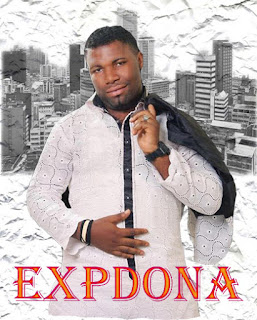His narratives reflect the eastern landscape and that of other parts of Nigeria with a world outlook. Adewunmi is Head, Department of Graphic Design, Institute of Management of Technology (IMT), Enugu.
“I have always had passion for photography as a child,” he begins. His late father was also a professional photographer, who died when he was just 3 years. “I saw some of his works, prints and his equipment, and when I was in secondary school, it became a revelation to me, which helped to drive my passion for professional photography,” he recalls.
The artist started experimenting with the camera from then till his university days at the Ahmadu Bello University, where he graduated in 1991. “I began to look at photography beyond what you do as a hobby. My specialisation as a graphic artist had given me an opportunity to formally study Photography as one of the majors,” he says.
He later obtained a Masters degree in Painting at the University of Nigeria, Nsukka, which has broadened an alternative, though complimentary channel of expression. He says, “One couldn’t achieve much in photography without a good camera; it is like your paint and brush, and you manipulate it to achieve results. Photography assumes the realm of personal entertainment. For me, photography is about documenting my narratives with my lenses. It is about finding narratives that would add value to society.”
His themes are variegated, ranging from nature, culture to the environment. He explains, “I look out for a unique angle that people can easily connect to. At a time, my focus was on wonders of nature. I worked on a number of sites here in the east and other parts of the country. I have gone to Idanre in Ondo State, Abakaliki, Calabar, Benin and Zaria to shoot various subjects. At a time, the carnage on our roads attracted my attention, and I documented what was happening.
“My lenses have caught rickety trucks used to supply drinks. I also captured images of logging trucks on our roads that poses danger to the society. There were images about not wearing helmets by motorcyclists, overloading of vehicles, bad roads, etc.”
A friend of his at Federal Road Safety Corps, Uyo, saw those images and suggested, in 2008, an exhibition on the “Dangers on Nigerian Roads”. He has done a couple of projects after that, and is currently working on environmental hazards under the theme “Smoke Dust and Fumes”, which depicts where people are working unprotected.
He adds, “You have women working in Abakaliki rice mills, quarries and palm oil mills without proper protection from pollutions, being exposed to smoke and fumes. You have men and women working in the saw mills, and you see the volume of dust and fumes that they are exposed to. That’s why I hope to organise an exhibition this year on the theme ‘Smoke, Dust and Fumes’.”
For him, photography is not just about the images and aesthetics. “It is using the aesthetics to draw attention of the public to issues requiring critical attention,” he declared.
The photographer goes about his art with zest. Tell you what, he is vociferous about the genius of photographers like him. “Photography,” he says, “is unique media of expression” and “Photography will achieve what any other art form, such as painting and graphics could, and much more. It is instantaneous. You could finish an artwork at the click of your shutter and could transform it in the darkroom. The quality of photography that enables you capture the mood is important.post by expdonaloaded.blost.com..
“Photography has the capacity to anger, evoke emotions and entertain but understanding the gadgets and the processing procedure enhances the quality of photographs. Photography inspires; it drives emotion. Photography begins where art stops. For me, I derive pleasure and entertainment from photography, particularly my creations. At times I flip through them, I enjoy them, I share them as much as possible- despite the danger of digital theft. We can change the world through Photography.”
In 2012, he and a few colleagues introduced Photo Africa, as an aspect of Life In My City Art Festival (LIMCAF), though, in 2009, they had the first photography exhibition under the festival.
He recalls, “Emeka Egwuibe and I had a joint photography show under LIMCAF. Photography is becoming very popular in Africa. There was the Adis Photo Fest and the Mali African Photo Show, and we began to think of how we could catch up on this growth and development of photography going on around the world.
He says, “Life in My City Art Festival is a Nigerian Art festival, and we were thinking of how to open up the competition to the whole of Africa. So, we felt photography is the best channel. We experimented the same year, 2012, and the result was fantastic. We had participants from about 13 countries, with over 80 entries.
“We followed it up and created a special unit of the festival for photography. This year, we hope to expand the scope to include motion photography, video art or short films. Photo Africa is good platform for young African photographers, and we hope to widen our scope. The ideal thing would have been to bring the photographers down here so we can have a workshop.
With the various prizes for that category, since inception the quintessential photographer says that has really inspired many younger artists to experiment with the medium. “We also organize photography workshops for younger artists at Institute of Management and Technology (IMT), Enugu and other times we work in collaboration with Alliance Francais, Enugu,” he adds.
How does he and others close the gap between photography, painting and sculpture? He responds, “Generally, photography is a vital aspect of art. In the Western world, it was accepted as a genre of art early 20th Century. Here, it was just lately that we began to value photography as an art form. Photography, as a medium, has not been fully tapped; it is gaining some attention, but it is still a gradual process.
“Aside having growing interest by many young artists, you must also win the interest of the curators. If a curator is not interested in photography or does not have enough knowledge about photography, what can one do? But I know that, lately, there have been debates and criticisms on the media and in art schools saying we are doing too little in photography. We now have photography festival in Lagos, and, through the activities of Life in My City Art Festival, the awareness is growing.
He believes that, in no time, the gap will close up. He enlightens us further, “But, then, there is another angle to acceptance of Photography. Some collectors do not like to collect photographs; they think the life span of a photographic print is short and, as such, not a good investment. But that is not completely true. I know that, today, you can preserve your photography by using superior printing materials that allow images to last for more than 200 years, and now you could print on canvas, which makes it even more durable. I have heard some collectors say, ‘I love photography, but I don’t buy photographs’. But I believe all that will change with time,” he echoes.
In Lagos, the artist says, there is abundance of many art groups and associations, and some of these groups have organised projects like ‘The Invisible Borders’, where talented group of photographers are meant to travel by road across some African countries. “They have carried out the project a number of times,” he says.
Unlike in Lagos, also, where there are collaborations by art institutions doing interesting stuffs for photography through workshops, talks and exhibitions, he laments that it isn’t like that yet where he is based. “Apart from what we are doing in Life in My City Art Festival and some other personal efforts, not much is happening,” he laments. But he can’t give up. “Of course, some of us continue to insist that alternative venues ought to be created,” he says.
Click photo to download; but you lied to me by Expdona aka finish gravity
Expdonaloaded blog;Click the photo to download aboki wey d suya by Expdona aka finish gravity




No comments:
Post a Comment